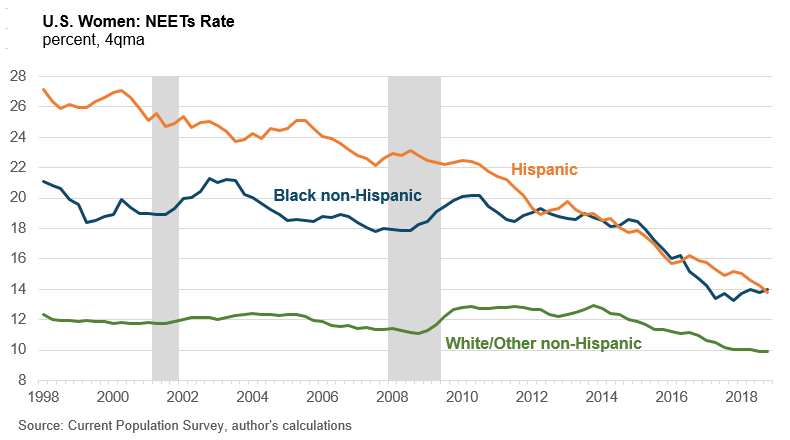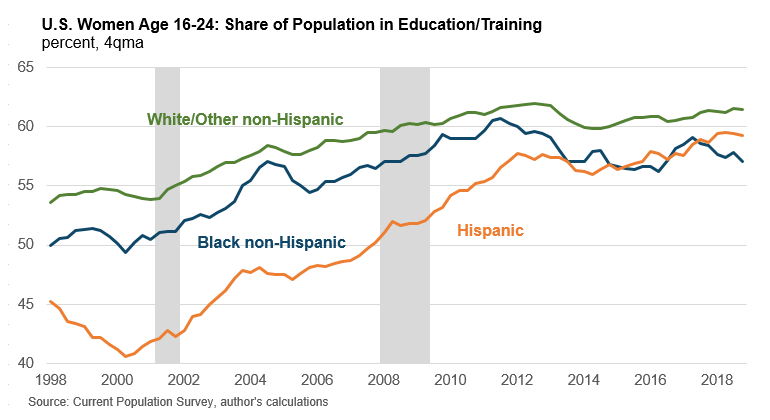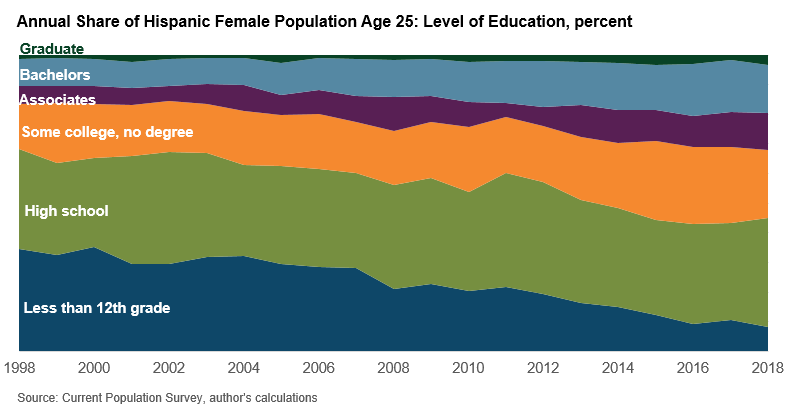In a recent recent macroblog post, my colleague John Robertson found that the recent rise in female prime-age (ages 25 to 54 years) labor force participation (LFP) over the last few years has been driven in large part by increased participation among Hispanic women. (Hispanic refers to people of Cuban, Mexican, Puerto Rican, South or Central American, or other Spanish culture or origin regardless of race.) Much of the LFP improvement among Hispanic women has come as they've shifted away from household duties.
To understand this development and determine whether it's a trend likely to continue, we look at trends in the activities of younger Hispanic women. In particular, we look at the so-called NEETs rate among women ages 16 to 24. The NEETs rate is the share of the youth population that is "Not Employed or pursing Education or Training." This group is sometimes referred to as "disconnected youth" or "opportunity youth" because they are generally less likely to be attached to the labor force as they move into their prime working years and are at higher risk of experiencing long-term unemployment, persistent poverty, poor health, and criminal behavior.
A look at the next chart shows substantial improvement in the NEETs rate among young Hispanic women over the last two decades. The gap has narrowed considerably and in recent years has tracked much more closely with black non-Hispanic women.
The declining NEETs rate for young Hispanic women primarily reflects shifting preferences toward more education and away from household responsibilities. As you can see in the next chart, the share of young Hispanic women who are in education or training has risen over the last two decades, up nearly 19 percentage points since 2000. Their share now more closely matches that of young black and white non-Hispanic women.
Mirroring the rise in educational activities has been a shrinking share of young Hispanic women who are not in the labor force because they are taking care of home or family, as the following chart shows.
Young Hispanic women have invested increased time in their education over the last two decades and as a result have higher average levels of educational attainment than earlier cohorts moving into their prime working years. To see this, the next chart shows the distribution of educational attainment over time for Hispanic women aged 25.
The higher levels of LFP in recent years among prime-age Hispanic women partly reflects the greater investment in education by younger Hispanic women. If this trend continues—and there is no obvious reason why it wouldn't—then it will help drive even higher labor force attachment for prime-age Hispanic women in the years to come.







 By
By